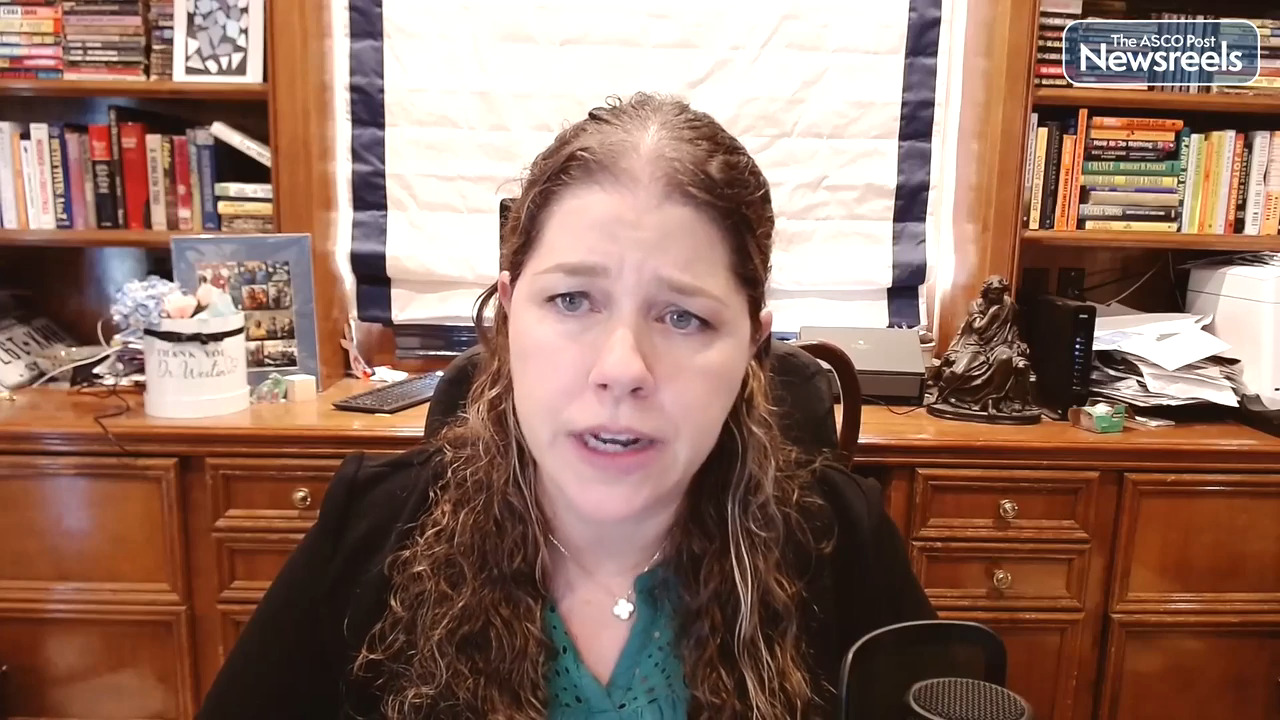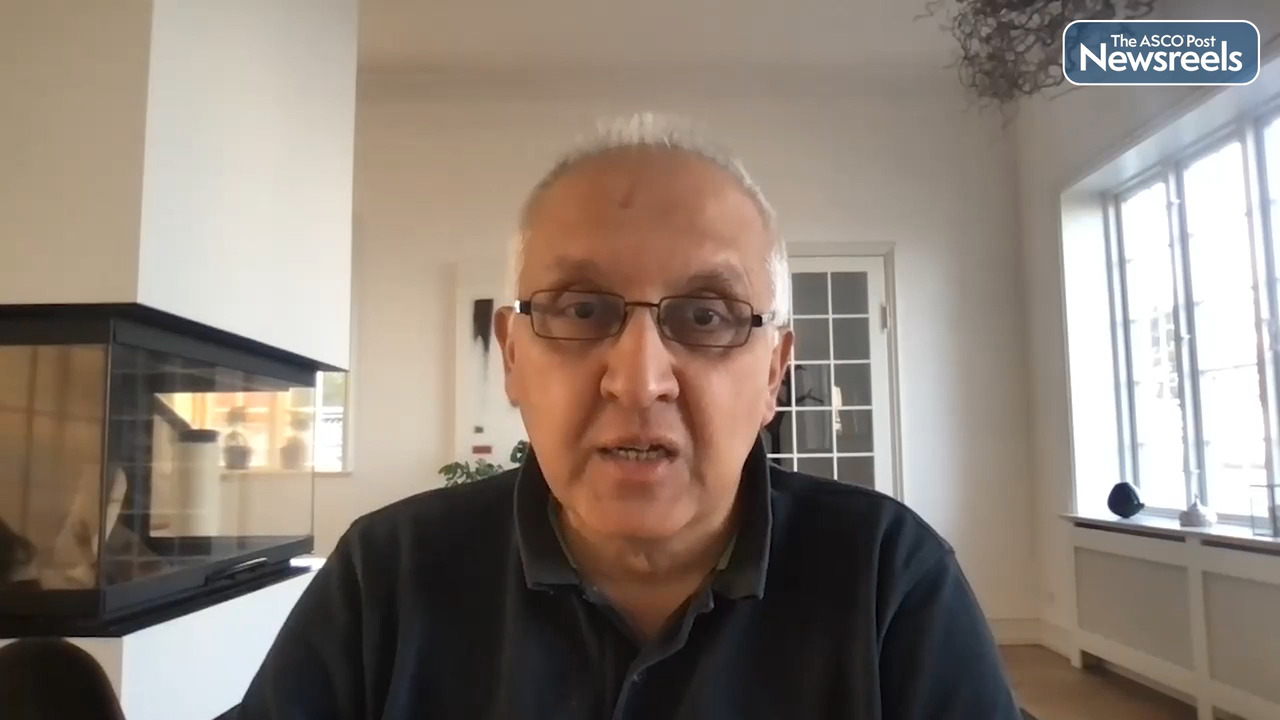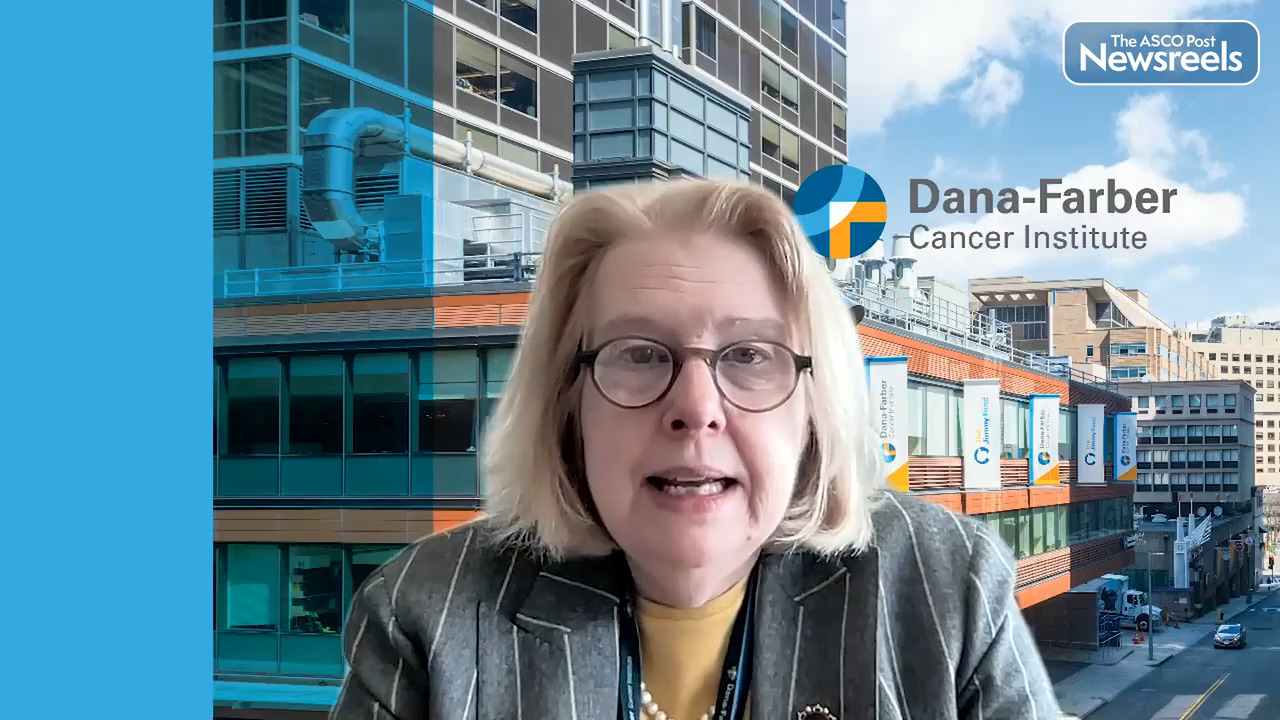Transcript
Disclaimer: This video transcript has not been proofread or edited and may contain errors.
PARP inhibitors have completely revolutionized how we're treating ovarian cancer, first being explored in the treatment setting and now moving up into front-line maintenance. We were curious to see if utilizing PARP as a neoadjuvant treatment in lieu of chemotherapy might be reasonable in a population with germline-mutant ovarian cancer.
And so, we started a small feasibility study, because we really wanted to make sure the patients were safe, and the way we defined feasibility was either the lack of disease progression or lack of unacceptable toxicity, like a dose interruption in more than 2 weeks or requirement for two dose reductions. We allowed patients that had either a germline mutant BRCA, RAD51C, RAD51D, or PALB2 mutation, and were dispositioned to neoadjuvant chemotherapy. They could be dispositioned to the NOW trial, which was two cycles, so 2 months of olaparib as a single agent.
Importantly, we got tissue collection, both pre-treatment as well as after the two cycles of therapy. At that time, the patients were imaged and determined if they could move to surgery directly without any chemotherapy or if they needed further therapy. And our hope was that we would see the majority of patients being able to transition right to surgery.
The good news is, we were. Everybody was able to receive the two cycles. Only one patient required a dose reduction and a dose interruption. Of the patients that went right to surgery, there was 13 of them that were able to go right to surgery. So 86% didn't require any chemotherapy. And excitingly, amongst those patients that did have surgery, the optimal tumor reduction rate to no gross residual disease was 86%. So our ultimate goal was achieved. In addition, the remainder of the patients who had surgery all had optimal tumor reductions. And so we were very excited and intrigued by that. Now, we did even have one patient that had a pathologic complete response, so very exciting results there.
And when we looked at other markers of efficacy, we saw about 60% of patients had a response to therapy amongst those that had measurable disease, and importantly, 93% had a reduction in their CA125, including the best percent change of 81%. So we saw a huge drop in the tumor markers that indicate benefit from therapy.
So, small study, but very intriguing that we might be able to transition to a completely targeted therapy in the upfront setting for patients with germline mutations in the setting of advanced ovarian cancer. One of the other really exciting things we saw was patients were enthusiastic about it, and in fact, several of the patients declined to get any chemotherapy. They, instead, transitioned immediately to PARP inhibitor after their surgery. So, to be determined if this is truly a safe and effective option, but this will need to be explored in larger trials.



